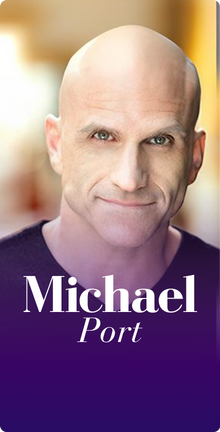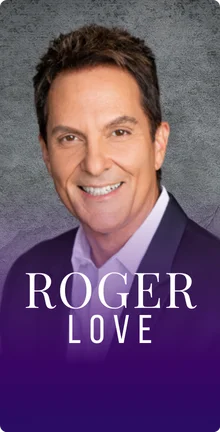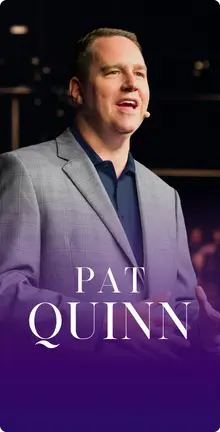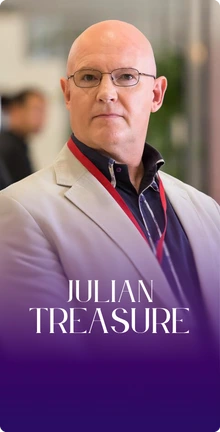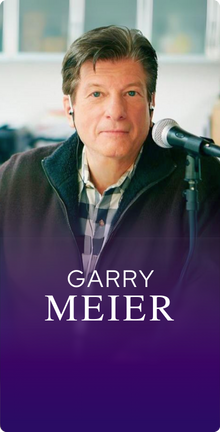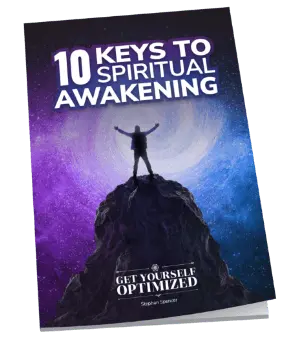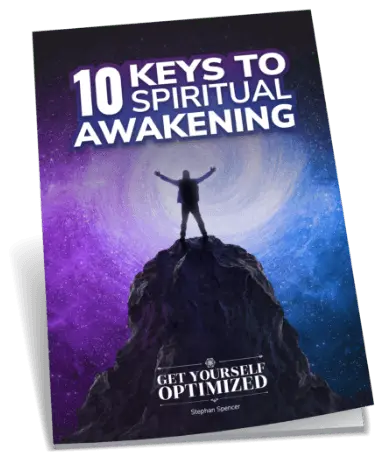In this Episode
- [02:31]Sam Horn reflects on growing up in a family of storytellers and how it shaped her natural talent for narrative.
- [03:59]She recounts a memorable swim race to demonstrate the principles behind her WWWAVE storytelling framework.
- [10:11]Sam introduces “Adversity” as a core element of every compelling story, emphasizing the necessity of conflict.
- [14:36]Stephan and Sam collaborate to refine Stephan’s personal story using the WWWAVE method.
- [24:40]Sam highlights the power of alliteration in creating stories that resonate and stick.
- [38:06]She explores how storytelling enhances daily communication and illustrates its impact through examples from her sons’ and grandchildren’s lives.
- [55:22]Sam outlines the value of her books as tools for mastering the art of storytelling.
Sam, it’s so great to have you on the show.
Oh, thanks so much. I have really been looking forward to sharing some stories and insights with your community.
Yes, and you know, I love this old adage that facts tell, but stories sell, and you’re very amazing at storytelling. How did you get so good at that? Was it just an innate ability, or did you work hard to develop that?
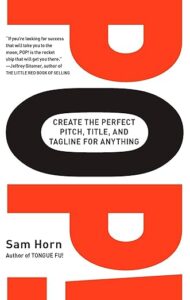
Both. It’s not an either-or; it’s both. I grew up in a family of storytellers, and I remember sitting around the table, and no one wanted to leave because we didn’t give listicles. We didn’t like, “Well, I went to the store and then I went to school.” It’s like, “No, here’s what happened at school today.” Just like, “Oh, I ran into so and so at the store today.”
So I learned firsthand that the way to get people’s eyebrows up and the way to keep their attention is to put them in the scene of what happened, not just to tell about it, but to show it in a way they felt like they were right there, and it was happening right now, and they were in the middle of the conversation.
What sort of stories are the most compelling and fascinating, and keep people coming back for more? There are different kinds of hooks that you can use, like controversy and humor. There’s a bunch of them. I can’t remember more than just those, a couple off the top of my head. But what seems to draw people in the most?
Well, Stephan, you know me, we like to get specific. We don’t give these sweeping generalizations. And people say, “Well, I agree with that. I just don’t know how to do it.” We get into the weeds and reverse engineer it so people can do it. I hope people have paper and pen, unless you’re driving, because I will share how you can WWWAVE a story so that it comes alive in people’s mind’s eye. Okay, shall I give a story first to show how it works?
Yeah, perfect.
If you want to raise eyebrows and hold attention, don’t just tell what happened. Put people in the moment. Let them see it, hear it, and feel it so vividly that they feel like they’re living it with you.
I used to live on a lake in Reston, Virginia, which is right outside of Washington, DC, and I woke up one Sunday morning and heard The Star-Spangled Banner being sung, and I thought, “What’s that about?” So I went out on my balcony, and there was a swim race. It was the annual one-mile swim. They sent off the competitive swimmers, then the 30, and over 40, and over 50, and over 60, and over 70, and over 80. I thought, “What’s my excuse?”
I went in and signed up for the Waikiki RoughWater Swim because I realized that I was telling myself I used to be a competitive swimmer, that I would get back in that lake someday when I wasn’t so busy. I was going to maybe train for a race when things slowed down at work. Well, you and I know we’ll never have more time than we have right now. That was a catalyst for putting it on the calendar; if it’s not on the calendar, it’s not getting done.
So I would ask everyone listening, what is something you’ve been promising yourself to do? Whether it’s writing a book, getting in touch with that friend, planning a 50th anniversary for your parents, or going out on a date with someone you’re interested in. If you’re just telling yourself you’re going to do it and it doesn’t have a date attached to it, you’re never going to do it.
Yep, that’s true.
I hope people right now put WWWAVE. Now I’m going to tell another story, and then unpack that so you can see how to put people, where, and when in the scene, who the lead character is, what was said, etc. Let’s see if I can get this under 60 seconds. I needed to train for that Waikiki RoughWater Swim, right? I lived in a community that had 20 pools. One day, I had been a desk potato all day riding, and I decided to get up and find a new pool.
I’m driving, and there’s one I hadn’t even noticed before. I pulled a U-ey and walked in. I realized I had found the family pool. There’s one of those mushroom fountains, and kids are playing Marco Polo; it’s so packed. I found a lounge next to a woman watching her three kids in the pool. Once again, they’re playing Marco Polo. Then a man walks into the pool in a business suit.
If you’re telling yourself you’re going to do it and it doesn’t have a date attached to it, you’re never going to do it.
He walks over and gives the woman next to me a peck on the cheek, and the kids bound out of the pool, “Daddy, Daddy.” They hug him. He goes and changes, and two minutes later, he’s in the pool with his kids. They’re diving off his shoulders and showing him the swim strokes they learned in their lessons. All of a sudden, he startled, looked up at his wife, and said, “Hun, why don’t we change our default? Why don’t I come to the pool every night after work?”
And Stephan, I hold my breath, look at her, and think, “Please say yes.” She thinks about it for a moment, then she looks at him and says, “Why don’t we?” In that instant, they changed their default from getting up, going to work, and coming home, to going to work, going to the pool, and coming home. Maybe I’m being a Pollyanna. However, I imagine that family always looks back on that summer as the summer that their dad joined them at the pool every night after work.
Now let’s unpack that. Write down “W” — where and when. I don’t mean it was 2012 because now people are doing the math in their head, right? They’re out of the story. So no, put people in the scene where and when. “I was on a plane, 30,000 feet up.” “I woke up in the middle of the night.” “I walked outside in the middle of a thunderstorm.” We can see what you’re saying, which means people are picturing your point. They’re already in the story, right? So, “W” starts with where and when. Now, keep it just a sentence. We don’t need a paragraph.
Second, who is the lead character? The lead character was the man in the business suit walking into the pool. I could picture him. I didn’t have to say he was six feet. I didn’t have to say he had brown hair, but he was a man in a business suit. We can picture him. And now Stephan, even if it’s us, if we’re the lead character, we can say, “I was exhausted after working 10 hours that day, and I plopped into a chair.” That’s enough for us to see that you’re exhausted and plopping in a chair—so, where and when, and who the lead character is.
Now, Stephan, this next one is a non-negotiable; if we don’t do it, it’s not a story. You know what the next “W” stands for?
Without dialogue, it’s not a story.
I don’t, but you’re gonna tell me.
Yeah, you’re right. “What was said?” If it doesn’t have dialogue, it’s not a story. Do you see how I re-enacted the dialogue? I don’t just say it. I show it. I turned because he did. He turned and he said, “Hun,” and he paused, “Why don’t we change our default?” And she thought about it, because she did. She didn’t just give an answer like that. She had to think about it. Then she paused so people would want to hear what she said next. “Why don’t we?” So, do you see? It’s the dialogue. It makes it come alive. This isn’t something that happened years ago. It’s like it’s happening right now. So, WWW, where and when, who’s the lead character, what was said?
Stephan, I will ask you to share one of your favorite stories so we can optimize our storytelling in real time. Because if we optimize our storytelling, we optimize our family gatherings, we optimize our rides in the car, we optimize a meeting, we optimize a pitch, etc. So doing this will help you get people’s eyebrows up, and they will want to hear what you have to say, even if they’re busy or distracted.
“A” is adversity. As you know, no story without conflict is just, “Well, then we went to Disneyland, and we had a great time, and it was really fun.” That’s not a story. What was the conflict? The adversity was that I couldn’t find a lounge chair. The adversity was like, he’s busy, etc. So, where does something go wrong in your story? What can’t people figure out? What are they struggling with? What are their doubts, fears, or impostor syndrome, so the story has teeth and is not just like la, de da, de da? What’s the adversity?
Now, “V” is for victory. How is that problem resolved? How is that struggle addressed? And it doesn’t even happen to be the Wookiees dancing at the end of Star Wars. It doesn’t have to be a happy ending. It could be resolved. It could be, “And I promised myself I would never let that happen again. I learned my lesson.” And next time someone says that to me, you see the “V” as a resolution in a way that we feel that some advancement or lesson is moving forward.
Then, “E” is emotional context. Emotional context: As we step out of the story and talk about how we feel about it. If we want our audience to feel something, we need to share what we felt at the time. “That was one of the worst times of my life. And I couldn’t have predicted that now is one of the best times of my life.” Oh, we showed the shift. One more thing about emotional context.
I think you know that I ran the Maui Writer Conference for 17 years, and I’ll always remember we had an Olympic swimmer, and he told us about training for the games, and he choked. He didn’t even get out of his heat. The people back home are saying, When are you going to be on TV? He’s not going to be on TV. He can’t even get out. He’s not in the finals. He quit the sport. He’s so disgusted with himself. Two years later, he thought, “I can’t end my athletic career like that.” So, he went back into training. He got a medal, end of the story.
Now, Stephan, I was the emcee. I looked around and saw what people were thinking. They were giving him polite applause but thinking, “Well, good for you. What’s that got to do with me?” Because of the emotional context, he never asked “have you ever” or “do you” questions. “Have you ever had a dream that didn’t work out? Did you quit because you were so discouraged? Did you give it one more chance?”
If we want our audience to feel something, we must share what we felt then.
If we want to make our story our audience’s or our reader’s story, we need to ask instead of just moving on. “Have you ever had that happen? What’s the default in your life? Could you change that in an instant?” This is the best year ever, and if we do that, if we WWWAVE our stories, people will be on the edge of their seats or turning our pages, because we have just made infobesity come alive.
Infobesity, that’s a term that I only heard from you. Can you define that for our listener?
Well, define it. We’re all experiencing it every single day. Infobesity is just a flood of neck-up information, of data of information, of statistics, of facts, and it’s literally and figuratively disembodied. I believe it’s so important to put humanity back into our communication, instead of just rhetoric or facts or statistics, which have no emotional context, to put people in the scene of our communication so that we turn infobesity into intrigue. We get people’s eyebrows up, and now they’re paying attention.
Yeah, so you wanted me to share a quick story, and then we would overhaul it and optimize it using your WWWAVE framework.
Let’s go.
So the one I’ll share is how I met Orion; it was an absolute miracle. I was at a Tony Robbins event called Date with Destiny. Prior to that, two months earlier, I had a spiritual awakening in India at a Tony Robbins Platinum Partnerships. Up to that point, I was agnostic my whole life, but a monk flown in from Chennai and we were in Udaipur touched me on the head and gave me a blessing, and everything was psychedelic.
If we want to make our story our audience’s or our reader’s story, we need to ask instead of just moving on.
I could see everything in technicolor. I felt this deep sense of peace and connection. I knew that God existed. I knew God. I felt God. There are no substances involved. I’ve never had any substances. But two months later, I’m at Date with Destiny, and it’s the last day of the event, I write up my relationship vision, and I know that God is there for me, and so I start asking him, after I wrote up the relationship vision for my soulmate to show up.
I wrote down what I wanted in the relationship and in her, what I would be for her, and what I would bring to the relationship. Then, I prayed. Well, twelve hours later, we were introduced by a mutual friend, and ten minutes into it, I knew she was my soulmate. The way I knew is because I did the blessing that I had learned and had received one in India, and learned how to do it myself and the whole group of people, like 1000s of people, most of them got the blessing that night, but she was one of the few who didn’t get touched, who didn’t get the blessing. She was overlooked.
There are no coincidences. Nothing’s random. I was meant to give her a blessing. “Oh, I know how to do it. I can give you one, if you’d like.” Ten minutes into meeting her, I’m putting my hands on her head, blessing her, and praying for her like she’s my soulmate. I’m like, “Wow.” I knew at that point. Nine days later, I proposed to her on a hot air balloon, and here’s where the adversity comes in. She said, No.
That was pretty devastating. That was a very awkward 20-minute descent back down to earth, figuratively as well as literally. And the good news was that I had reproposed to her nine months later, and she said yes that time. Obviously, it worked out because we’re married now. That was a rough moment for us, but we got through it.
When we deliberately weave in vivid, specific details, we don’t just inform, we transport. We turn listeners into participants and make our message unforgettable. Share on XAnd as far as the emotional context, I’m sure there have been listeners who have had things not work out with a partner with a romantic interest, and hopefully, if it was meant to be, they didn’t give up. That’s my story.
Now you and I have had an opportunity to talk about other things, and you know my agreement. If I say something and it aligns with your vision, voice, and values, you’re welcome to run with it. If I say something you don’t agree with, interrupt me, and we’ll tweak it or toss it. Does that sound good?
Yes.
I’m going to make suggestions, just like I would for someone preparing for a TEDx talk or giving an important keynote. Let’s work on this story right now. First, there are several stories here. In a story, if we have too many scenes, we’re asking too much of our listener. It’s like, “Well, then this happened, and then we switch to this scene, and then there’s a balloon, and then there’s whatever.
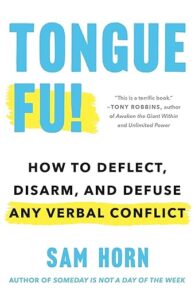
So, we would discipline ourselves to distill it down to one story, and then ask questions, because everyone’s with us, and they get the point of that story. And then we say something like, “But wait, there’s more.” We’re engaging them in the second part of the story. I actually think this is a hero’s journey. I think this is actually three stories. Elmore Leonard, a great author, who was one of our favorite keynoters at Maui Writers Conference, and someone in the audience put their hand up and he said, “Mr. Leonard, people love your books. They can’t put him down. They’re just such page turners. Why do people love your book so much?”
Guess what he said? “I try to leave out the parts people skip.” So you see, we’re going to go back over this and we’re going to leave out the parts people skip. In other words, what really doesn’t contribute to the story or make an important point? I’ll just tell everybody right now. How do you leave out those parts? You use the words “fast forward.” “Fast forward, two months later…”
Now, we leave out a lot of stuff that isn’t really contributing to the story, and they’re still with us because we use the words “fast forward.” It switches the scene, puts them in a new scene, and they’re still with us, and we’ve got continuity, instead of a lot of information that’s confusing them. Okay, so on the fly right now, I think the first scene is that you’re at a Tony Robbins event. Now you and I know that there’s Platinum. There are all these different levels.
Most people don’t know that, though, so we’ll leave out that part. If you say I was at a Tony Robbins event, that’s good enough for people. They can see that; it’s crystal clear. “And Tony had invited a monk so and so to be there.” Now, a little emotional context. What you may not know? This includes the audience. We don’t just tell them, “I’m an agnostic.” We say, “What you may not know,” because many people know you now, where you’re very spiritual and God-centered.

So do you see how people who know you are kind of getting, “Oh, I didn’t know that.” The eyebrows go up, right? “What you may not know is that I was an agnostic at that time.” Now, people may not know what an agnostic is, so you would say, “I didn’t believe there was a God.” Because, see, now when you say, “I knew God existed,” do you see that we’re showcasing the shift in a way that makes it more dramatic, by stating the before and the after, makes it much more of a turnaround, of a change.
And then say, “I remember as if it were yesterday. I, the agnostic. The monk came over and touched my head.” So, you’re going to touch your head, because you see, if you touch your head, everyone in the audience is picturing the monk touching the head of the agnostic. And now we again use verbiage, “And suddenly,” or “Instantly, the agnostic…” We keep reinforcing the word “agnostic” to show you went from not believing there’s a God, “And suddenly…” pause, pause, pause, “I saw God.”
We don’t rush and blush through that punch line. We enunciate it. We pause and punch it so people feel the incredible turnaround from the agnostic getting touched on the head and suddenly seeing God.
Infobesity is a flood of neck-up information, data, statistics, and facts, literally and figuratively disembodied.
And now we go back to the root. The tone, “Part of me attending that Tony Robbins event was that I wanted to find my soulmate.” Do you see how if you keep referencing yourself as the lead character, you keep anchoring the story in a way that we can follow you, because we just have a big scene with the monk. Now we go back to the event. “Now, one of the reasons I went to that Tony Robbins event…” People know where they are. “…was to find my soulmate.” Now we need a bridge. Come back to the monk touching your head and say, “Little could I have predicted…” Do you see how bridges work? When I’m working with people on their TEDx talk or their storytelling, we can’t jump from scene to scene because people’s eyebrows are crunched up. They’re confused. “Wait a minute. Are you still at the Tony Robbins event, or is this it?” We lost him. We need to take our listeners with us by saying, “Little could I have predicted, two months later…” Look at the difference between just saying, “Two months later…” That’s too abrupt. That yanks them out of the story, and they think, “Well, so what was the point? Why are we here instead of there?” “Little could I have predicted that two months later, I was back at a Tony Robbins event…”
Yeah, it was a different one. A larger one.
Okay. But see, in a way, they don’t need to know that, because if you say, “Little could I predict it, two months later…” they know it’s not the same event. You and I know it’s a different level. It’s a different group, but for the continuity of the story, we ask ourselves, “Is it important for the audience to know this is a platinum event instead of a what, what?” Maybe not, right? So you say, “Little could I predict, two months later, I’m back at a different Tony Robbins event, and now my goal is to call in my soulmate.”
We have the power of three. “Call in my soulmate” is too vague for people to care about, relate to, or identify with. So if you say, “And I had written down what I was looking for, including one, I wanted her to be compatible, for us to share these same interests. Number two, I really wanted her to be in integrity. I didn’t want a lot of drama and so forth…” I’m gonna stop talking right now. What were three things you were looking for, Stephan?
Somebody who was really heart-driven, really kind, and exotic. I remember that one. I had a huge list. I had 30 or 40 things on there.
When we give specific details, people are much more likely to believe the story happened, and it stays in the story as if it’s actually happening.
Here’s the good news. You can craft that to say, “I had 30 things on my list.” That’s one sentence, right? You say, “And three of the most important qualities to m…” So, reference the long list. “And three of the most important qualities to me were that she was kind.” Now, personally, alliteration pops. You just said qualities. So, I would put “kind” first because it crafts the language, so it pops, instead of saying heart-driven. Do you see how if I say, “Qualities, heart-driven,” there’s no pop there. I’m not crafting the language so that it’s very pleasing to the ear. So I would say, “First, that she was kind. Second, that she was heart-driven. Third, that she was exotic.” Because now people are thinking, “Okay, well, if I had a list, what would my 30 things be? What would be my top things?” And you see, that’s the power of storytelling. When we deliberately give specific details, people in their own minds are thinking, “Well, what’s my list? What would be my top three?” And you said that she was introduced to you by a mutual friend. We can’t really picture that. We don’t know what the mutual friend looks like. We don’t know whether this was at midnight after dancing all night. We don’t know if this was over tea in the morning. So I would say something like, “I’ll always be grateful to Adele.” Another thing we’re doing, Stephan, is when we use names of people, people don’t think this is a made-up story. Stephen Colbert said this is truthiness. When we give specific details, people are much more likely to believe this happened, and it stays in the story as if it’s actually happening. Now, guess what? We’re going to book in. We’re going to circle back, comedians do this with a callback. “Guess what? He brought over this exotic person, and the warmth just exuded from her.” What was the third kind?
Exotic.
Exotic, kind, and heart-driven.
By the way, I just pulled up a photo of the relationship vision. I know you said alliteration is really helpful in hammering in the points. I found three E’s: empathic, energetic, and exotic.
Okay, I just love this. Now, see if we were working on a TED talk, and in a way, everyone listens when we give a listicle, and there’s no alliteration. They don’t connect with each other. They’re disparate in a way. That’s when we start losing people, and it becomes infobesity because we can’t remember it. When we craft it, as you actually did with energetic, exotic, and empathic, you kind of tell a joke on yourself. You say, “Yes, I actually made my top three qualities, alliterative.”
Because we read our audience’s minds, they may think, “Well, I don’t believe that was your list.” That sounds like a list you came up with afterwards to sound good for the doubters and the cynics in the audience; we could lose them right there. So we’d better get ahead of that and address that objection. If you’re thinking, we don’t say, “I know you’re thinking,” that’s presumptuous. We would say, “And if you’re thinking, ‘Oh, that sounds pretty crafted for a list.’ Well, that’s how I roll. I know the importance of alliteration. I really did come up with energetic, exotic, and empathic.”
Confused minds check out. If your message isn’t clear, your audience won’t stick around to decode it. Share on XSo now we come back into the story and need a bridge. Here is where I think we say, “And within three minutes, I knew she was my soulmate. Fast forward…” We need a fast forward because I don’t think you just went up in a balloon ride right then. You would say, “Fast forward. Three months later, after dating or spending time with her, I knew for sure she was my soulmate, and I wanted to propose to her, and I thought I wanted this to be special.”
You see how you’re the lead character, but we’re taking you in your mind with dialogue. “I knew she was my soulmate, and I knew I wanted to propose to her, and I knew I wanted it to be special,” and now you would show, “I arranged to take her up in one of those big balloons out in the countryside…” Did you go at dawn or something like that to get the good air?
Yeah, we went early, and the night before, we went to the Miss Universe pageant in Las Vegas. That’s pretty wild.
I’m so glad you brought that up because that’s really interesting. We would discipline ourselves as storytellers. That would hijack the story because now people are in Las Vegas with Miss Universe. In a way, it is not in alignment with the agnostic becoming a believer, wanting his soulmate, meeting her, to feel that flow. All of a sudden, we go over to Miss Universe, hijack it.
Okay. Now, for people listening, if you’re writing a book and something important happened at that Miss Universe contest, later on in the book, or later on in a presentation, you can come back to a story and you say, “Remember when I was telling you the story about meeting my soulmate? Well, what I didn’t tell you is actually the night before…” Do you see how we’re anchoring them in the story? They’re remembering it, and now we’re adding value with something else that made it even more of a miracle.
Yeah, the thing that blows people’s minds is that it was nine days after we met, not three months.
Confused people don’t keep listening. If we see people’s eyebrows crunched up, we are just confusing them.
Now, Stephan, when I talk about getting people’s eyebrows up, people are thinking, “What the heck is that about?” Well, that’s from the Maui Writers Conference. I learned that often with infobesity, if we’re describing our book and telling people what happened, we get into so much detail. People can’t follow it. It doesn’t make sense. We’re jumping around, and right now, everybody, crunch up your eyebrows.
That means we’re confused, and confused people don’t keep listening. If we see people’s eyebrows crunched up, we are just confusing them. You can actually say, “So let me get back to the point.” Or, “Let me tell you what I learned from that.” Or, “Let me jump to a final scene.” “Oh, we got him back,” with that phrase. If we see that, we want people’s eyebrows up the entire time they’re listening to or reading, “Oh, I wish I were there.” “Oh, a hot air balloon.” “Oh, you met your soulmate,” and all that.
Okay, so let’s come back and we’re gonna wrap up this story. I think you’re up in the balloon. Now, put us up in the balloon. Are you going over the countryside or something? Put us up in the balloon right now.
We’re in the Las Vegas desert, and I talked to the pilot. It was just the pilot, my now wife, Orion, and me. It was a very tight fit for this small basket. I’m getting on one knee. I asked the pilot to hold my phone and take a video of me on one knee, and Orion has no idea this is coming. I mean, nine days. That’s crazy, right?
And beforehand, I talked to the pilot, told him what I was planning on doing. He said, “You know, I’ve never had a failed proposal.” I broke his record. I totally ruined his streak. The pain in his eyes. That was heart-wrenching. I can’t believe she just said no.
I’m so glad you’re telling me this because this is real. So often, people tell these stories, and everything is perfect. Everything is unicorns and ponies and puppies, etc. People in the audience just start selling back in their chairs because they think this is too good to be true. This didn’t happen like this. They’re making this up. Here’s what you do to the audience, so they have patience with you as we set the scene. You say, “So let me set the scene.” Do you see?
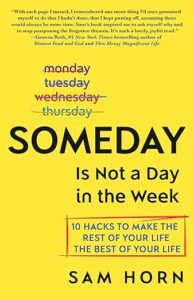
It’s like, “I had talked with the guy who ran the balloon company. I had told him I wanted to propose to her. I had told him, “I’m going to give you my phone, and please video the proposal so that we can capture that.” He said, “Yes.” Do you see how we’re setting the scene? “And we’re telling him, I’m going to give you the phone so you can video it. And he said…” pause, pause, pause, “Well, this is great because I have never had a failed proposal.”
Now elongate that, because if we rush, “Oh, yeah, I’ve never had a failed proposal…” People are going, “What? I didn’t get what he said,” and we lose the whole dramatic fact that the opposite of what everyone anticipated happened. He said, “Oh, this is great…” Pause, pause, pause, “I’ve never had a failed proposal.” Boom, land it. Everyone got it.
Power of the pause. It’s so important.
Power of the pause. “So see, there we are, floating above the Las Vegas desert.” Do you see one sentence? “Floating above the Las Vegas desert.” “I turned to her, I got down on one knee.” Now, do you see one phrase? “I turned to her, and I got down on one knee. I pulled the ring out of my pocket, put it out, and said, “Would you please marry me?” Now you can showcase and highlight the “rejection.” “She thought about it for a moment and said no.” Or she said, “Stephan, I can’t,” or she said, “Stephan, I’m not ready.” Or she said, “Stephan, I need more time.” What did she say?
She said no. And then she said, “Not yet.”
Okay, good. “She said, “No, not yet.” And now you can say, “You can imagine how devastated I am.” So, what is one word that describes how you felt?
Yeah, I was devastated.
Now, everyone who’s listening, and I hope you’re thinking about where you will be speaking or writing next, whether it’s a blog online. Do you see how everything we’re doing is crafting this story? We’re taking out the parts people skip. We’re keeping people in the scene. We’re reenacting the dialogue. And right then, one word, if you say, “I was devastated,” we feel what you’re feeling. This is human communication, not infobesity, and we feel crestfallen.
We feel how much you were looking forward to this. We feel that you set this up so that it was a memory of a lifetime, and it was the opposite of what you wanted. Now, we need another bridge. And you say, “Here’s the bridge. I’ll give it to you right now. Ready?” Look, three words. “Want good news? Nine months later…” Big smile. “Nine months later, I proposed again, and this time she said yes.” That’s the end of the story.

Now, we hook and hinge. “How about you at one time in your life when you were agnostic? And if you come to believe, that’s one hook and hinge from the first part, “Are you in a relationship, or are you looking for a relationship?” Look, it’s one question, but we’ve covered everybody. “Are you in a relationship? Are you looking for a relationship?” We’ve left out the parts people skip. We’ve distilled that sentence so it pops. “Do you have your criteria of what you’re looking for?”
It’s like, “Were you gifted to find it, or are you still looking for it?” It’s like, “Did you meet that person and they said no? Have you given up if you’re in a relationship? Could you start working again to see those qualities in those people, that you’re taking for granted, or you’re focusing on what they’re not instead of what they are?” Or, “Could you put yourself out there and choose to believe…” now we’re bookending back into being a believer in God. “…in good things happening, or being able to co-create what you want. Could you choose to believe that if you’re clear about what you want, and if you put yourself out there looking for it and searching for it, that it just may come into your life?” How do you feel about that?
Yeah, that’s great. Amazing.
Good. And it’s fun, isn’t it, Stephan?
When we optimize our storytelling, we elevate everything—family dinners, car rides, meetings, and pitches. It’s the secret to capturing attention, raising eyebrows, and keeping people engaged—even when distracted. Share on XIt is. This is applicable to everything, because one of the most fundamental things that we are is communicators. We’re sharing stories all day long, in our workplaces, homes, at our dinner table, over the phone with loved ones, at family reunions, and during presentations. Everywhere.
You know me, Stephan. When I’m on a podcast, giving presentations, or working with clients, I don’t just tell people what to do or what happened. I almost always put him in the scene and reenact something that shows what happened instead. So I’m going to give you a quick example. It’s like people are thinking about, “Okay, I’m going to go out with my partner tonight for dinner,” or “I’m going to sit down with my family tonight for a meal,” or “We’re going to have a trip this weekend, and we’re going to be traveling in the car.”
I want you to start thinking about something that happens that’s interesting, and you’re not going to just tell people what happened. You’re going to say, “Something interesting happened to me today,” or “I really met an interesting person this week.” Do you see how one line gets people’s eyebrows up, even if they’re on their phones or thinking about their day? If you say something, you don’t say, “I want to tell you a story.”
People may be rolling their eyes, going, “Oh boy, I don’t have time for this,” or “I gotta leave in five minutes.” So don’t say, “I’m gonna tell you a story.” Say, “Something interesting happened to me today.” They’ll give you a few seconds of their attention, right? So now let me put you in a story of what you can tell next time you’re with someone and you want to be interesting. You want them to pick their head up from their phone. You want them to give you two or three minutes of their time, so hopefully you can connect instead of being two ships passing in the night.
Stop just seeing the surface – look under the rocks.
Here’s the example: My sons, Tom and Andrew, grew up in Maui. They had a wonderful teacher named Joy Gaston, who was Hawaii State Teacher of the Year, and she would take her class on field trips to the beach. They would actually walk a mile to the beach, but this wasn’t a white sandy beach. This was a black lava beach. And she had the kids circle the tidal pool, and she had them look at it, and she said, “What do you see?” And they look at it and they go, “Nothing.” And she turns over a rock, and there’s a spiny starfish, and she turns over another rock, and there’s an eel. And both my sons and I are forever grateful to Joy Gaston because she helped them look under the rocks instead of just seeing the surface.
People, I want all of you to stop just seeing the surface. As you went to work today, you fixed dinner. Your boss told you this. You had a difficult customer. That’s the surface. That’s not a story. Look under the surface and put us in the scene of what happened. Like, “I met with the most interesting Uber driver today. She just quit her job as a nurse because she realized she can work as a remote nurse from anywhere. So she’s moving to Barcelona.”
Now, this is true. It’s by Southwest in Austin right now. I took an Uber into Austin to speak for an event, and I’m talking with my Uber driver, because Uber drivers are great sources of stories, aren’t they, Stephan?
Yes.
And now ask an interesting question. I just ask, “Do you work for Uber full time?” Because they’ll either say, “Oh yeah, I work 10-12 hours,” and I say, “So what’s one of the most interesting customers you’ve ever had?” We’re off and running every single time, or they say, “I only work part-time.” And then I say, “Oh, what do you do when you’re not driving for Uber?” “Oh, well, I’m writing a book. It’s why my kids are at school. I work on my book, and when they go to bed, I drive for Uber to help pay the bills.”
The world is teeming with stories if you ask people interesting questions.
Do you see how the world is teeming with stories if you ask people interesting questions? You’re doing them a favor because they get to tell you about what’s really going on in your life, and we’re connecting as human beings over stories instead of, “Do you like your job?” “It’s okay.” “How is school?” “Okay.”
The most inane and boring question you can ask is, “How are you doing today?” They know that you’re not really interested. That’s just a nicety. You’re just throwing them a bone, but you don’t really want to stick around for the full, long answer. So, one thing I ask instead is, “Has anything miraculous happened lately?”
Wow. So, put us in the scene, Stephan. Think about the people around you, and it could be a podcast guest, a kid, or a friend. You asked an interesting question and put us in the scene of an interesting story you’ve heard recently.
Well, we met through Genius Network, and I was at the Genius Network annual event. This was a few years ago. I’ve been a member for a while, and this older gentleman I was sitting next to at breakfast—it was like a big round table. There were a whole bunch of these round tables—I asked him if he had anything miraculous happen to him, and he shared the most amazing story of him in line at a grocery store. The guy in front of him turns to him, and he’s at the register, this guy, but he turns to the guy I’m talking to and tells him, “Your mom wishes you a happy birthday, and she loves you.” And of course, it was his birthday. Did I use the power of the pause there? Did you notice that?
You see, I couldn’t wait to hear the rest of that story. Yay. Stephan, keep going.
It was obviously an incredible, life-changing event for him. It showed him how the unseen world is as real, if not more real, than the seen world. This guy could not have possibly known that it was this guy’s birthday and that his mother had passed. But there you go.
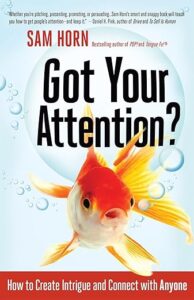
Okay, now let’s remember W-W-W-A-V-E. Go to the emotional context, Stephan. Tell us how you felt about witnessing that, or how what that man said, when that gentleman talked about his mom passing, wishing him a happy birthday.
I felt awe and gratitude, and I was thinking how many stories must exist that are unbelievable, incredible, miraculous, that people are afraid to share because they’re afraid of getting judged or ridiculed.
Wow. You know me, ink it when you think it, and when you say it, so that we can go back. Now, let’s take the elements of that. So, to put people in the scene, say, “I’m at Genius Network. Picture…” Do you see one word ‘picture’? “…Picture a thousand people from all around the world, founders, executives, entrepreneurs, or thought leaders…” It’s like two sentences, yet I know it’s a very interesting group of successful individuals, their founders, etc.
So put people in the scene, “I’m at Genius Network. Picture a thousand people: founders, CEOs, executives, entrepreneurs. And I’m at a round table…” They’re round tables, aren’t they?
Yeah, this was breakfast just before the day started. A bunch of round tables, and I’m sitting at one of them.
“So we’re having breakfast in one of those round tables. And there was a gentleman…” You said an older gentleman with white hair and so forth. Describe this individual, please.
White-haired, probably in his late 70s, early 80s.
“So there was this gentleman. And look, white hair…” You point to the white hair. “…probably in his late 70s, early 80s,” that’s enough. “And he turned…” because it’s very interesting, just the word ‘turn.’ Look, if I said, “He just said to someone,” we can’t picture that often, especially when you turn to someone to say that. And now, do you see we’re following the action in a way that feels real? And we’re seeing that person turn to him, we know he’s addressing someone. “And he said…” pause, pause, pause, “…by the way, your mother wants to wish you a happy birthday.” What exactly did he say again?
So this guy shared a story that happened to him at a grocery store. It was years earlier, and his mother had passed, and his mother had wished him, from the heavens, a happy birthday through this guy who was clearly, obviously, a psychic. He shared this, and what I didn’t share about why would somebody share something this personal? And he didn’t share it with the whole group at the table. He shared it with me privately.
It’s not something you might want to share from the stage if you want to get poked holes ahead of time for potentially telling a fish tale. So he told me, but I told him a story about some miraculous thing. I don’t remember what it was, but my wife accuses me of oversharing a lot, so I’m certain I was oversharing something about something miraculous that happened to me. And he’s like, “Well, I got a story to share with you.”

Thank you for those details. “And I turn to the gentleman next to me, and I ask one of my favorite questions, which is, “What is something miraculous that happened to you?” And I asked that question because it just bypasses small talk and chit-chat. We’re not talking about the weather or the consistency of the eggs or something like that, and now we’re going to put a little bit more context in it. “…and he must have sensed that I really meant that question. I really wanted the answer to the question.”
Do you see how we’re not belaboring the point? We’re putting people in the scene, though, like meeting a stranger, asking a question that bypasses chit-chat, and him sensing that you actually wanted the answer. “So he jumped into an incredible story where he was in a store…” Do you see how we are leaving out the parts people skip? We’re putting in the parts that help us see it, feel it, be in the scene, trust it, etc.
I think it is really important for our listeners that you leave out the skippable segments from it. People are so used to being able to skip ahead, skip the ad, skip the ten seconds, or just jump to thirty seconds, whether it’s Netflix or YouTube. They want to be able to do that in conversation, too, because they’re trained this way. They’re spending all this time online just getting the dopamine hit one after the other, just scroll and click and dopamine all over the place.
What percentage of your listeners are parents, would you say?
Oh, that’s hard to say. I would imagine at least half.
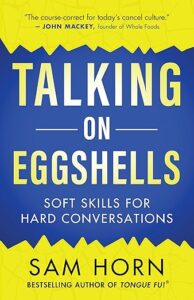
So, if half of your listeners are parents, I’m going to bring up right now. I’m blessed to have two sons and three grandchildren. My sons are both storytellers because I modeled this for them. One of my sons works for NASA. He believes his ability to tell a story in the interview helped him land his dream job. My son, Andrew, speaks for Google, for the Cleveland Clinic and is a writer. He runs a men’s group. What does he do? He helps men tell the stories they’ve never told before, that they’ve got bottled up inside, that are undermining the joy in their lives. So see, we can teach our kids to tell stories, and when we do, they will feel like they’re leading a more interesting life, because they’re looking under the rocks. People will want to be around them. They can land their dream job because everyone else in the interview, “And then I was manager with this, and then I moved to that company, and then I did this,” and they’re the one in the interview that people are getting to know in a way where they like them and want to work with them. And now, with my grandkids, we do a cousin camp every summer. I don’t just say, “Oh, remember when we went to the Thinkery? I said, “Oh, what was your favorite thing at the Thinkery?” “Oh, the water room…” So I’m hoping that what everyone is taking away from this is that storytelling isn’t fluff. It’s not petty, it’s not trivial. It is the key to leading a more interesting life. It is the key to being more interesting, so people want to be around us.
It’s the key to being a leader in life, business, and everything you do.
Yes, you’re 100% right. So let’s get back to you, Stephan, because I’ve been talking a lot this time. Think about stories you’ve heard on this podcast, Get Yourself Optimized, and one that you still remember as if the guest was on today, because it was so vivid, and they put you in the scene, and you were in that with him. What’s one of your favorite stories?
Garrain Jones. You probably know him through Genius Network.
And sure, he’s right here in Austin.
Oh, yeah.
So, hey, put us in the scene.

He’s hit rock bottom. He’s living in his car parked at a gas station, and a homeless guy knocks on the window, wakes him up, rolls down the window, and says, “What do you want?” It’s like, “Money.” “What are you talking about? Look at me. I don’t have any money. Get out of here.” The guy walks away but turns around and yells at Garrain on his way out, saying, “Change your mindset, change your life,” and then disappears.
This rocked his world like it shook him to his very soul. That was the impetus for him to finally change his life. Fast forward, now he’s got a book called Change Your Mindset, Change Your Life. He’s a mega millionaire. When I heard that story on my podcast and shared it with Garrain, it’s like the intuition came in that guy was not just a guy, not just a homeless guy, but an angel. He was sent to utter those exact words to you. And Garrain said, “100%, I totally believe that.”
Once again, the power of stories is that stories often have a punch line. I think you know that I help people craft a phrase that pays right, so that instead of being easy to forget and hard to remember, we come up with one line like, “Change Your Mindset, Change Your Life,” that people can repeat, so that they can think about it and act on it. So you put us in the seat. “He’s in his car. He’s at a gas station, a homeless guy,” and look, you acted it out. “Knocked on his window,” boom, boom, boom.
You knocked on his window, rolled it down, and he said, “What do you want?” “Well, money, of course.” “I don’t have any.” Then, drama. “He walks away, and then he turns around…” Do you see how precise you were in the visuals? So we could see him in the gas station, the guy walking away and turning around and shouting, “Change Your Mindset, Change Your Life.” So, I’m asking people, if we’re going to hook and hinge this right now, we would say show people listening and people watching.
What’s your mindset? What are you telling yourself? Well, the reason I can’t stay in the relationship is that my parents got a divorce. It’s like that because I didn’t get that promotion because the boss is playing favorites. I’m not writing a book because I have, “What is your mindset? Is it helping you or hurting you? Have you had an angel come into your life recently? Has there been someone telling you that there’s a better way to do this, that there’s something you can change? Are you ignoring them, dismissing them or not even seeing them? What if you listen to them? What if today you decided to do? You see what a lovely story.
Then we can hook and hinge it back to people. I don’t care whether they’re a multi-millionaire CEO, a stay-at-home mom, or a college student; they will be able to adapt what you’re saying to their personal circumstances. And that’s the power of stories for people to socratically relate to it, reflect on it, and then perhaps choose to do something differently as a result of it.
Powerful stuff. Well, I know we’re out of time. But if our listener wants to learn more from you, and they could learn so much, you’re so brilliant, at all this storytelling, writing, and overall communication and persuasion. How do they work with you, and how do they learn from you?
Well, first, thank you. There are several ways, Stephan. I put my books on Audible, Someday Is Not a Day in the Week, Talking on Eggshells, and Tongue Fu! They’re all on Audible. You can listen to this, if you would like, or you can read the book. And as you can imagine, the books are full of stories where I put people in the scene and then segue out of them, so hopefully they’re relevant and actionable for you.
What I’ve learned Stephan is that what people want from me is clarity, clarity on what they can do with their light that’s going to light them up, clarity on how to come up with a one of a kind business name or book title or presentation that’s going to help them earn a living doing what lights them up. So, I have Clarity Weekend here in Austin, Texas, Washington, DC, Banff, Canada, and Honolulu, Hawaii. Stephan, we can talk about coming to Europe if you want.
I hope they go to my website, which is easy to remember, samhorn.com. There’s information about my Clarity Weekend there. There are my TEDx talks there. I also hope we connect on LinkedIn because my life is my lab. Mary Oliver said, “Pay attention. Be astonished. Tell about it.” So, I pay attention, am constantly astonished, and speak and write about it. I do that on LinkedIn, and I hope we can also connect there.
Amazing. Thank you so much, Sam. This was such a powerful workshop. I hope that our listener will apply this in their life. All it takes is just starting with one story, one small step, and you’ll start transforming your whole life.
It is a way to optimize our life, relationships, and communication at home and work.
Yeah. Okay. Thank you. We’ll catch you on the next episode. In the meantime, have a fantastic week. I’m your host. Stephan Spencer, signing off.
Important Links
Connect with Sam Horn
Books
Businesses/Organizations
Film
People
Previous Get Yourself Optimized Episode






